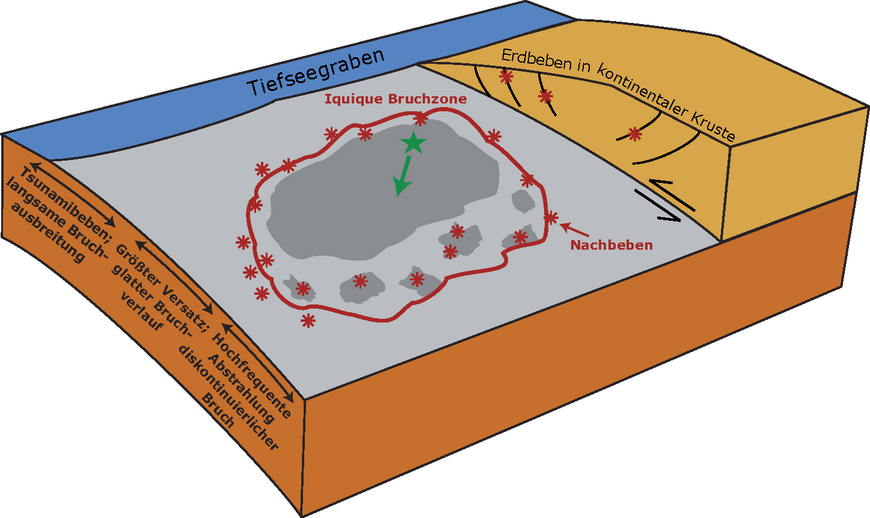Seismicity and Large event analysis
Great earthquakes along plate margins and within the interior of tectonic plates threaten human populations directly through the strong shaking they are causing and, for earthquakes along subduction margins and some other settings, through the large tsunamis triggered by the uplift and subsidence of the seafloor resulting from the earthquake. We are aiming for an improved understanding of the physical controls on rupture growth and arrest, and the interplay between long term deformation and the short term release of seismic energy. We further are interested in the question how properties of the plate interface and the lithospheric structure surrounding the fault influence these processes. Fundamental insights gained can then support the development of improved time-dependent hazard estimates and more reliable earthquake and tsunami early warning systems but we also pursue more directly applicable approaches such as working on methods for fast characterisation of earthquake parameters from realtime data streams.
An outgrowth of this research field extends to the seismic characterisation of non-tectonic triggers of tsunamis such as volcanic flank collapse or very large landslides.
We employ the following approaches:
Interdisciplinary analysis of the rupture propagation and large events. Through cooperation with other groups, we combine teleseismic backprojection for high frequencies, full waveform modelling for lower frequencies, GNSS and InSAR for static offsets, and tsunami modelling as further constraint.
Analysis of aftershock sequences and background seismicity with methods such as double difference relocation, automatic detection of seismic events, moment tensor inversion.
Comparison of structural models, seismicity distributions and indicators of long term deformation
Increasingly, we are applying and further developing methods employing machine learning techniques, both to simplify processes previously carried out manually such as picking arrival times of earthquakes and also to explore more fundamentally questions such as rupture predictability, where we lack consensus on a clear physical model.
Our strategy is also to participate in the operation of the Integrated Plate Observatory in Chile (IPOC) in order to generate multi-decadal time series for a highly active subduction zone.
With this research we are contributing to the Topic “Living on a Restless Earth – Towards Forecasting Geohazards” of the Helmholtz research programme “Changing Earth – Sustaining our Future”, Subtopics 3.3 “Extreme events: characterization, cascades and impact” and 3.2 “Temporal variations and the late stage before catastrophic events”.




